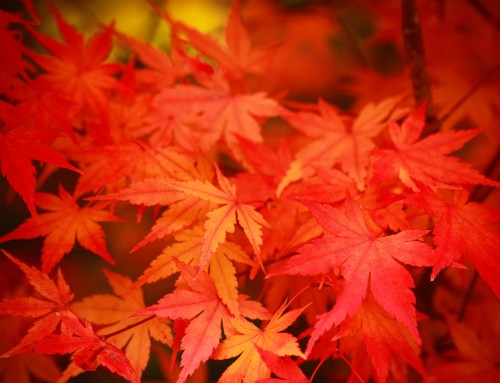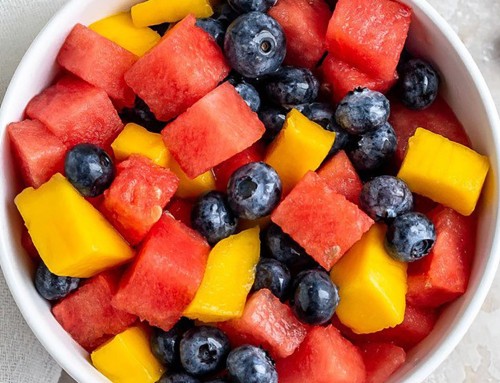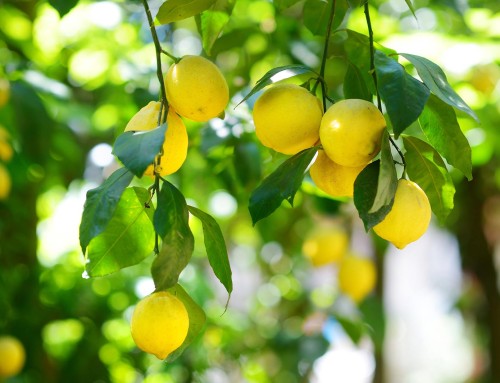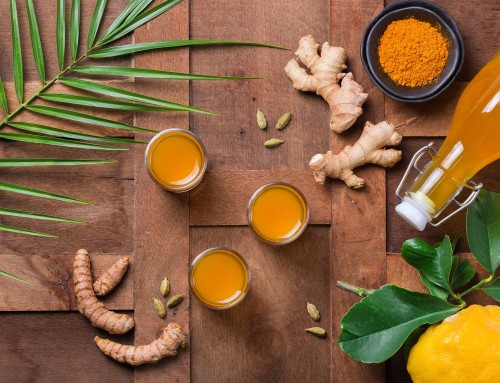In the environment, major changes occur when winter turns into spring. As the forces of nature change externally, those same forces present within your body are now ready and willing to help you both purify and renew.
Cycling through the year and through your life
The cycle of the year represents the cycle of life:
- January through to May is the Kapha season and the first part of your life is when the slow, heavy, structuring principle of Kapha predominates, and you build up your body and your strength.
- June until August is the Pitta season and the hot, active and organising principle that Pitta represents tends to be more dominant in the middle part of your life.
- September to December is the Vata season where the cooler, drier, lighter, moving qualities holds sway and this more refined Dosha predominates the later part of live.
Since ancient times we have celebrated the death of the old and the rebirth into the new that the midpoint between the cold and hot seasons represents. Every year we go through the same cycle and for each of us, springtime represents the chance of re-birth – the throwing off of the old body and the birth of a new body.
In the latter part of this article are some Ayurvedic tips that will help facilitate the seemingly opposing forces of purification and renewal in your body:
- One force helps you remove excess Vata and Kapha, as well as waste products and toxins, accumulated during the cold season;
- The other helps you build up stronger more vital and healthy cells and tissues, so that you experience increased freshness and energy for the rest of the year.
Springtime diseases
For many of us, spring season is associated with upper-respiratory infections leading to congestion, colds, hay fever, and allergies. In Ayurvedic terms there are two reasons for these conditions – the body’s release of accumulated Ama and the melting of Kapha.
Ama is releasing
Because the Shrotas (body channels) tighten up during cold weather, Ama (toxic or waste material) can accumulate, especially in the fine cellular channels of the body. As the weather warms and your body relaxes, these fine Shrotas expand and have a chance to release this toxic material.
Kapha is melting
Spring is characterised by increasing warmth, moisture, softness and a nurturing gentleness. The slow, heaviness and wet qualities of Kapha are also present and this is why spring is known as the Kapha season.
Additionally, during winter some Kapha is bound to have accumulated in your body, especially with the rich Christmas and New Year meals many of us consume. In the same way as spring melts any lingering snow and ice, its warmth also liquefies any accumulated Kapha.
Kapha Ama cocktail
Ideally, this liquefied Kapha is automatically eliminated from the body. But due to the uncertainty of the weather, during this change of season, Agni, or digestive fire, can sometimes be good and sometimes be slow and sluggish digestive. A weak or uncertain digestion and purification system can mean that this melted Kapha may get mixed with circulating Ama and create a Kapha Ama cocktail. This mixture is also called Shleshma.
The presence of Shleshma can leave you feeling tired, sluggish, and foggy in the mind.
As Springtime warms your body, increasing amounts of circulating Ama, and Shleshma, can overwhelm your immune system and you can become prone to infections, such as colds or flu, or exaggerated immune reaction, such as hay fever.
A good diet and seasonal routine is one of your best tools to minimise the kapha-accumulating tendencies at this time of year, and support the elimination of excess Kapha and Ama that the warmer weather has released.
Support the natural process of springtime renewal and revitalisation by adopting a diet and lifestyle that adds lightness, sharpness, dryness, and heat to your body
Herbals that aid the detox process
Ayurveda considers spring to be the ideal time to detox and build up a strong immunity or Bala. This way we strengthen the body for the rest of the year and also avoid the diseases often associated with the change from cold to warm weather.
Following are some Ayurvedic herbal products that are designed to facilitate the detox process.
 Kapha Churna
Kapha Churna
To counteract congestion and a sluggish digestion, sprinkle Kapha Churna spice mix on your food. It helps supply all six tastes to your meal and helps counteract the influence of Kapha Dosha.
 Kapha Tea
Kapha Tea
Another useful de-congestant is Kapha Tea. This drink is especially in the morning and evening when Kapha is highest. The most important time of years to balance Kapha is during Springtime.
 Allergard (MA1788)
Allergard (MA1788)
Allergard supports your body’s natural resistance to allergens. It helps your body avoid toxic reactions, it reduces the toxic Ama that lead to reactions with allergens, it supports digestion, it helps decrease sensitivity and it help nourish liver functioning.
Sniffle Free Tea
Drink a warm, resistance-enhancing tea such as Sniffle Free Tea, twice a day before or after meals. The herbs in this thermogenic tea help to quickly balance Kapha Dosha.
 Inhalation Oil
Inhalation Oil
If you feel congested, the blend of seven essential oils used in Inhalation Oil helps keep your nasal passages, lungs and sinuses clear. It may be inhaled in steam or rubbed on the chest. It is also useful for helping to keep the muscles, including those of the forehead and temples, relaxed and joints comfortable.
 Breathe Easy
Breathe Easy
Breathe Easy particularly targets the upper respiratory system. Breathe Easy tablets help keep the channels, clear, so that Shleshma naturally begins to drain from your body. Breathe Easy strengthens your Agni (digestive fire), balances the production of moisture and mucus, and enhances the bioavailability and circulation of important nutrients.
 Amrit Kalash MA4 and MA5
Amrit Kalash MA4 and MA5
The Amrit Kalash Nectar and Amrit Kalash Ambrosia herbal supplements support the total health of your body and improved its resistance. Scientific studies have shown that Amrit supports the function of the immune system, the detoxification system and the nervous system.
 Triphala Rose
Triphala Rose
The Maharishi AyurVeda blend of herbs called Triphala Rose is very useful as part of a spring cleanse. The ancient texts refer to triphala as an ‘toxin scraper’ and it helps pull toxins out of the body via the intestines. Rather than being a laxative, triphala is a tonic for the bowel. It tones the bowel walls and brings the colon to optimal functioning.
Springtime health tips from Ayurveda
- During spring your appetite is naturally lower, so reduce heavy, oily and fried foods.
- Reduce foods with sweet, sour, and salty tastes.
- Reduced heavy or sour fruits like bananas, figs, dates, oranges, pineapples, coconuts, and melons.
- Reduce heavy or watery vegetables such as cucumber, courgettes, avocado, olives, sweet potato and squash.
- To reduce Kapha in your body, open your channels of elimination and purify Ama, favour foods with pungent, bitter, and astringent tastes.
- Increase lighter foods that are easy to digest, such as fruit and fresh vegetables.
- Eat plenty of freshly cooked vegetables and a variety of lentils and beans. The bitter and astringent tastes of such foods indicate their purifying qualities.
- Breakfast should be light, such as fresh or cooked fruit or just a cup of tea.
- Warm (not hot) honey and lemon water (can add a little ginger) in the morning is very purifying.
- Lunches should be the main meal of the day and supper should be lighter than lunch. Cooked grains, steamed vegetables, and lentils are good choices.
- Eat plenty of bitter green vegetable, such as cabbage, broccoli, cauliflower, spring greens, broccoli and endives.
- Favour pungent spices such as mustard, ginger, black pepper, cloves and asafoetida.
- Herbs are very suitable to add to your meals, as they generally have bitter and astringent tastes and some are also pungent.
- Spring is a perfect time for cleansing your body. Try an apple-only fast for a few days with raw or cooked apples.
- Skipping both breakfast and supper and eating only at lunchtime for 7-10 days is a great detox diet that will really revive your digestive system and restore your strength of appetite.
- Support the process of opening up and detoxifying your Shrotas or body channels by drinking hot water and herbal teas.
- Eat only when you are hungry and don’t overeating – finish eating when you feel satisfied but not full.
- Avoid snacking between meals.
- Reduce the amount of oil or ghee you use while cooking.
- Reduce your intake of dairy products, especially in the morning when it is the Kapha time of day.
- Always boil and add spices such as ginger, cardamom, turmeric, or cinnamon to milk before drinking it. Milk is one of the most nutritious foods available, but because of its cold and heavy Gunas or qualities it can increase Kapha and cause congestion. Boiling milk and adding spices reduces those qualities and helps make this wonderful food more digestible.
- Reduce your intake of meats, particularly meats that are heavier to digest, such as pork, beef, duck and seafood.
- Avoid all soya products and fast foods, sweets, chilled drinks and ice cream
- Take less nuts and bread.
Panchakarma –a complete detox system
This is an ideal time to do a most holistic and complete purification treatments called Panchakarma. The transition period between seasons is when the body is primed and ready to purify itself of accumulated toxins.
Maharishi Panchakarma includes a full programme of Ayurvedic massage, steam baths and intestinal cleansing treatments, to rid your body of accumulated Ama during the previous season. Panchakarma also strengthens your digestive fire or Agni, to ensure that more Ama will not accumulate during the coming months.







